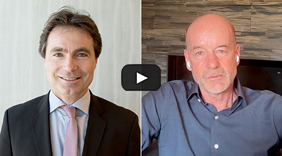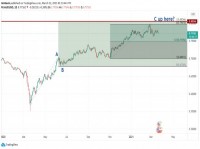|

Engineer of Contrarian Signals
Bradford Paskewitz was one of the relatively few commodity trading advisors who made money in 2009. Asked about this, he points out that
'09 was a difficult year and Paskewitz Asset Management's flagship program made significantly less than its long-term annualized return.
Mr. Paskewitz's quiet modesty makes him unusual in an industry where people tend to loudly tout their success. His contrarian strategy, too, is unusual for a CTA. So is the sterling track record of more than 22% compounded return, which got him the first place in a thorough-going new ranking by Attain Capital-see our Top Ten.
Having started his career at General Electric as an engineer doing research on missile radar signal processing, Mr. Paskewitz came to trading with high-end technical credentials. After developing and trading quantitative strategies since 1987, he started PAM in 2002.
Below, he explains the strategy used in PAM's contrarian program, which trades S&P 500 futures. A more diversified new program is in the works. The firm manages more than $300 million in assets.
"To persistently generate alpha, you need to give highly talented
quantitative people state-of-the-art tools to design and test algorithms."
Opalesque Futures Intelligence: How did you get into futures trading?
Brad Paskewitz: For seven years I worked as an engineer. Then one day I
received a call from a recruiter who said that a client, a bank, was looking for
someone with my exact background. It did not make sense to me but I said to go
ahead and submit my resume. That's how I was hired by Banque Indosuez in 1987 to
develop and trade quantitative strategies in the futures market. As a commercial
bank they could trade only financial futures because of regulation at the time.
We traded a combination of stock indexes, interest rates and currencies.
OFI: What were the skills you brought from engineering?
BP: My core skill set was artificial intelligence, statistics and
computer programming. So I was able to program and test trading models. After
three years at Banque Indosuez I moved to Lehman Brothers, where I led a project
with the goal to apply advanced machine learning methods to forecast futures
market movements. This used artificial intelligence and was cutting edge at that
time.
OFI: What is your approach?
BP: It is a contrarian strategy. The basic idea is that the market is
ready to reverse course after going in one direction for a time. After the
market rises, our models will move to sell; after the markets goes down, we'll
buy. Essentially our models predict tops or bottoms.
OFI: So you're not a trend follower?
BP: The logic of our strategy is the exact opposite of trend following.
Our returns are uncorrelated with the Barclay CTA Index and negatively
correlated with many of the largest CTAs.
OFI: What's the time frame for your contrarian approach?
BP: Our models have been good at forecasting on a short-term basis. The trades
average six trading days but can be as short as one day or as long as three
weeks.
OFI: Is there a discretionary component?
BP: No, it is purely systematic. We take a strictly quantitative approach to all
aspects of trading, from selecting the strategy to risk control. We've never had
to override signals.
OFI: You say you use more than one model. Are they all contrarian?
BP: We use three contrarian models, which look for different patterns in market
data. These are weighted equally in the portfolio. They're like three traders
looking at market behavior from different angles to determine tops and bottoms.
OFI: Why do you trade only S&P 500 futures?
BP: Our first client wanted an S&P 500 trading program. S&P 500 futures have the
advantage of being very liquid-$100 billion to $200 billion is traded per day in
this market. Given that liquidity, our program has an estimated capacity of $1
billion.
OFI: Does the strategy work with other instruments?
BP: It works in some markets, not all. But it works well with most stock
indexes around the world as well as individual equities and other select
markets. We have been developing a separate program, expected to launch in month
or two, that will trade other markets and models. These are all liquid futures
markets.
OFI: Trend followers lost money in 2009. How did contrarianism work
out?
BP: 2009 was a relatively tough year for us as well, in the sense that we
did significantly worse than in previous years. We forecast short-term tops and
bottoms, but the market had very long streaks going up for extended periods some
days. Based on history, our models signaled that the market was likely to turn
down. There is no precedent of a 60% gain in one year unless you go back to
1930s. It was an explosive, one-directional move.
OFI: But unlike many CTAs, you made a profit last year. How did that
happen?
BP: There were times when market kept going straight up. But in between
those times, there were up and down movements-zig zag price action. That's what
we made money on. So it was not as bad as it might have been. Our ideal market
is one where volatility zig zags. When the market persistently goes up, the
model short sells and then market moves against us.
OFI: What do you expect for the business looking forward?
BP: To persistently generate alpha, you need to give highly talented
quantitative people state- of-the-art tools to design and test algorithms. We've
built an R&D platform that allows us to more easily create programs and run back
tests. That's how we developed the new diversified program. We have an R&D team
in China of nine full-time people, in addition to people in New Jersey. We're
also automating operations.
OFI: How did you hire researchers in China?
BP: Our chief financial officer, Diana King, is Chinese and her brother
is an entrepreneur in China. They know how to do things there.
| 




 RSS
RSS












